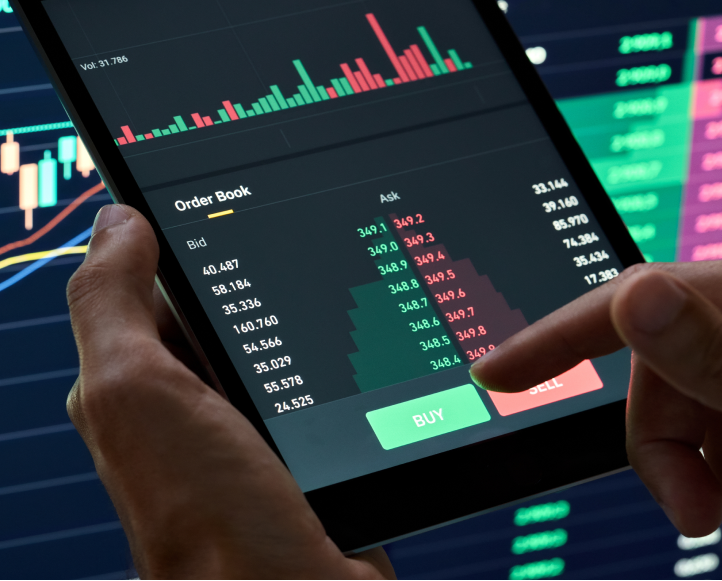
Understanding Trading Margin Crypto: Risks and Rewards
The world of cryptocurrency trading has evolved dramatically, and with it comes the emergence of new trading strategies which include Trading Margin Crypto https://advertising.investorideas.com/Bitcoin-Cryptocurrency/Stocks_List.asp. This strategy allows traders to borrow funds to increase their position size, potentially amplifying profits. However, it also introduces significant risks, making it crucial for traders to understand this financial mechanism before engaging. In this article, we’ll delve into the intricacies of trading margin crypto, exploring how it works, its benefits, the associated risks, and strategic considerations.
What is Trading Margin?
Margin trading refers to the practice of borrowing funds from a broker to trade financial assets, such as cryptocurrencies. In this scenario, the broker typically requires a margin deposit, which is a fraction of the total trading amount. Think of margin as a loan given to the trader, allowing them to enter larger positions than their capital would normally allow. For example, if you have $1,000 and your broker offers a 10:1 leverage, you can trade up to $10,000 worth of cryptocurrency.
How Does Margin Trading Work in Crypto?
In margin trading, the process begins when a trader decides to open an account with a cryptocurrency exchange or brokerage that supports margin trading. After the setup, you deposit collateral, known as margin, which serves as a security for the borrowed amount. Depending on the trading platform, the margin requirements can vary, and the trader must remain aware of these to avoid liquidation.
Once the account is funded, a trader can place a buy (long) or sell (short) order. If they anticipate that the price of a particular cryptocurrency will rise, they can buy on margin. Conversely, if they expect the price to drop, they can short the asset. This ability to profit from both rising and falling markets is one of the attractions of margin trading.
Benefits of Margin Trading in Crypto
1. **Increased Buying Power:** The most significant advantage of margin trading is the enhanced buying power it provides. With the ability to leverage funds, a trader can enter larger positions than they could with their own capital alone.
2. **Potential for Higher Returns:** Due to the leverage involved, successful trades can yield a substantially greater profit compared to trading with limited funds. A small price movement in favor of the trader’s position can lead to outsized gains.
3. **Flexibility:** Many exchanges allow margin trading for multiple cryptocurrency assets, giving traders the flexibility to diversify their portfolios and explore various trading strategies.
4. **Short Selling:** Margin trading also enables traders to short sell, providing opportunities to profit from declining prices which are usually not available in traditional trading setups.
Risks Involved in Margin Trading
While margin trading offers the allure of higher potential returns, it carries considerable risks. Traders must be cautious, as the downsides can be just as significant as the upsides:

1. **Liquidation Risk:** If the market moves against the trader’s position, their losses can escalate quickly. If the equity in the margin account falls below the maintenance margin requirement, the broker may liquidate the trader’s positions to cover the losses, which can result in substantial losses.
2. **Interest on Borrowed Funds:** When trading on margin, the trader is borrowing funds, which means they might have to pay interest on the amount borrowed. This can add up quickly, particularly if the position is held for an extended period.
3. **Market Volatility:** Cryptocurrency markets are notoriously volatile. Rapid price swings can trigger stop-loss orders, leading traders to exit positions at undesirable prices, which can amplify losses.
4. **Emotional Stress:** The nature of margin trading can introduce significant stress and pressure, leading to emotional trading decisions that could adversely affect outcomes.
Strategic Considerations for Margin Trading
To navigate the complexities of margin trading successfully, traders should incorporate solid strategies to mitigate risks and enhance their chances of success:
1. **Educate Yourself:** Understanding the mechanics of trading margin, the specific leverage policies of the exchanges, and market behaviors is vital. Knowledge is power in the high-stakes world of margin trading.
2. **Start Small:** New traders should begin with smaller amounts and gradually increase their exposure as they become more comfortable and familiar with the trading process.
3. **Utilize Stop-Loss Orders:** Implementing stop-loss orders can help limit potential losses by automatically closing positions at predetermined prices. This can safeguard against significant market downturns.
4. **Risk Management Rules:** Setting strict risk management rules, such as only risking a fixed percentage of the trading capital on a single trade, can protect the account from substantial losses.
Conclusion
Margin trading in the cryptocurrency space can offer traders a unique opportunity to unlock increased buying power and profit potential. However, it’s paired with risks that demand a nuanced understanding and strategic approach. By weighing the benefits against the risks and employing fundamental trading strategies, traders can better position themselves for success in this dynamic market. Always remember to trade responsibly and stay informed to adapt to the rapidly evolving cryptocurrency landscape.

Commentaires récents